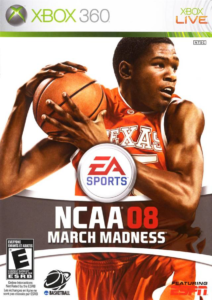
Should NCAA athletes get paid?
It has been set in stone in college athletics: student-athletes should not be paid beyond the cost of attending the university. However, this viewpoint has been called into question in the past weeks with a new law in California.
The new law, which takes effect in 2023, attacks the NCAA philosophy of athletes getting a degree, not money for playing sports. The view is also being taken up by multiple states and on Capitol Hill.
In 2018, the revenue for college athletics was upwards of $14 billion. With this California law, student-athletes will be able to promote products and companies, using their image and likeness for the first time.
In a recent interview with the New York Times, California Governor Gavin Newsom commented that “every single student in the university can market their name, image and likeness; they can go and get a YouTube channel, and they can monetize that. The only group that can’t are athletes. Why is that?”
The NCAA has been looking into ways to address this issue. In a recent statement, the NCAA stated it was “unconstitutional,” and that they were “taking further steps in California.”
The PAC-12 conference, which includes four California universities, says the law will “lead to the professionalization of college sports and many unintended consequences.”
Both the NCAA and PAC-12 lobbied against the issue, as well as several large universities, including the University of California, Stanford and USC. If the NCAA makes the universities ineligible to compete, they will not appear in large showcases such as the College Football Playoff or the NCAA tournament.
In 2014, one of college’s largest sources of revenue was the Electronic Arts (EA) sports video games. EA released two games annually based around college athletics. College football and basketball were two of the most popular sports games in the industry. However, between 2010-2014, the games were stopped. The major reason for ending their production was the Ed O’Bannon trial.

NBA Superstar Kevin Durant appearing on the cover of a NCAA video game
Ed O’Bannon was an former UCLA basketball player in the mid-1990s. He was working at a car dealership in 2009 when a friend told him he saw O’Bannon in a video game.
Thinking it was crazy that they were using his profile in the game, O’Bannon decided to sue the NCAA over their use of players’ images in DVDs, video games, photographs, apparel and other material.
“We don’t actually use player names, but we do use all the attributes and jersey numbers of the players,” said Peter Davis, the NCAA’s director of corporate alliances, at the time.
The NCAA has admitted to using players image and likeness to earn money. In 2014, each school received $78,000 in revenue for allowing their team to be in the game. However, the athletes do not see any of this money.
The NCAA claims that few schools make money from athletics, even though schools have large spending tendencies. They fund new buildings, pay coaches big bucks, and supply a variety of amenities.
The University of Alabama once made an “MTV Crib” video showing off the incredible football facilities. The 10 largest football stadiums in the country are college stadiums. The University of Michigan has claimed that on football game days, their stadium is the fourth largest city in the state of Michigan.
Schools also spend millions of dollars on their coaches each year. Another benefit coaches receive is the ability to make money off their own image and likeness. College coaches make money off of camps, apparel, podcasts, and even TV deals.
Some may argue that these athletes will make their large money deals once they go pro. However, this is true for very few. Only 1.6 percent of football players and 1.2 percent of men’s basketball players play in the professional leagues.
Bottom line, the majority will never see any money from athletics.


